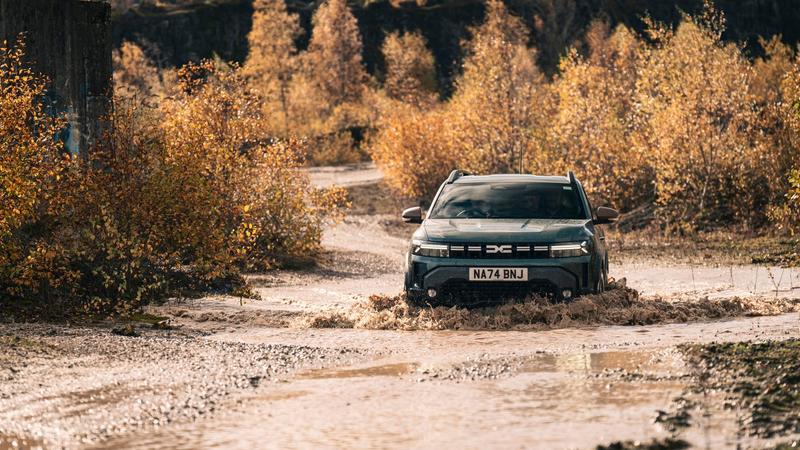
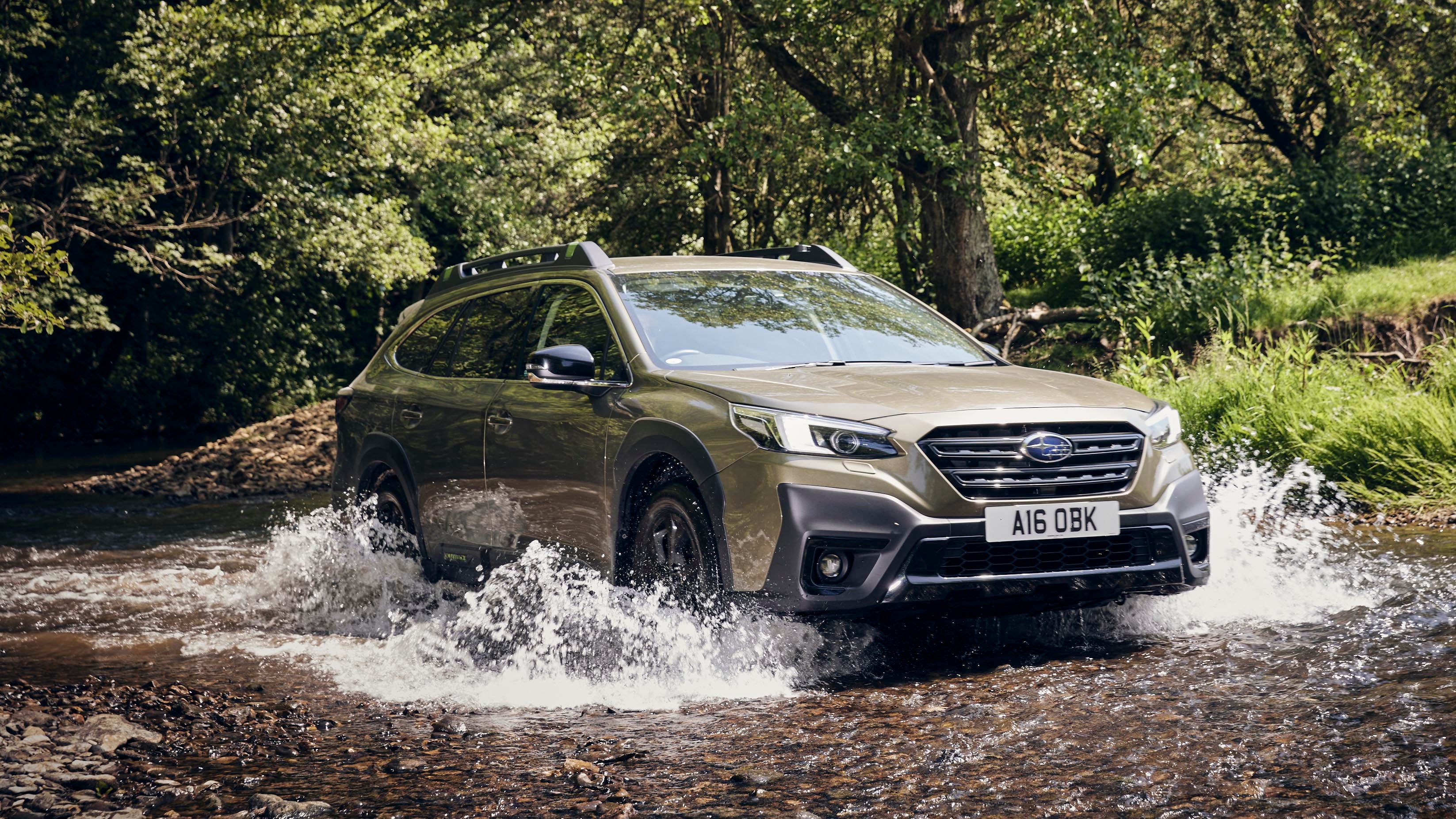
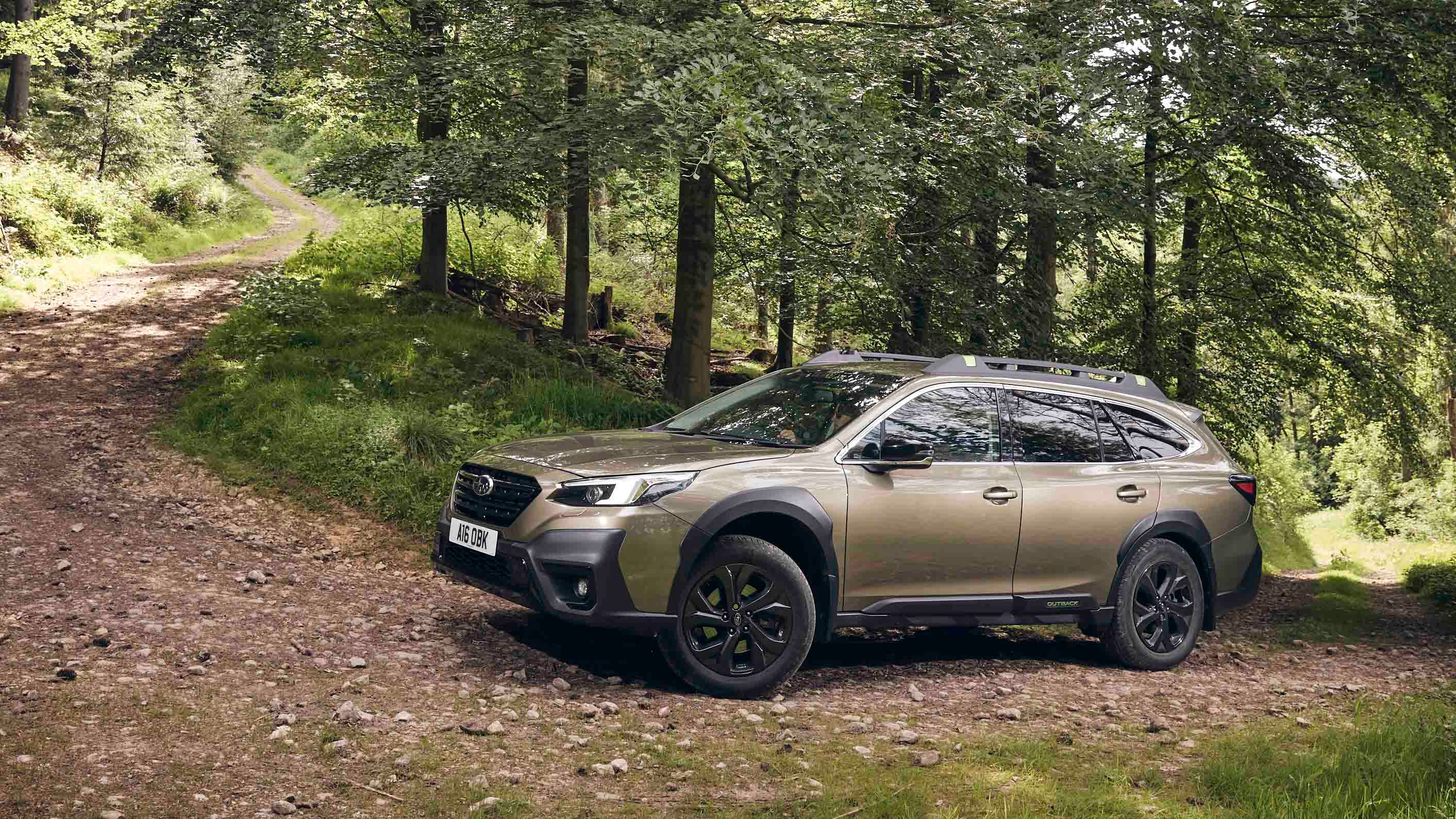
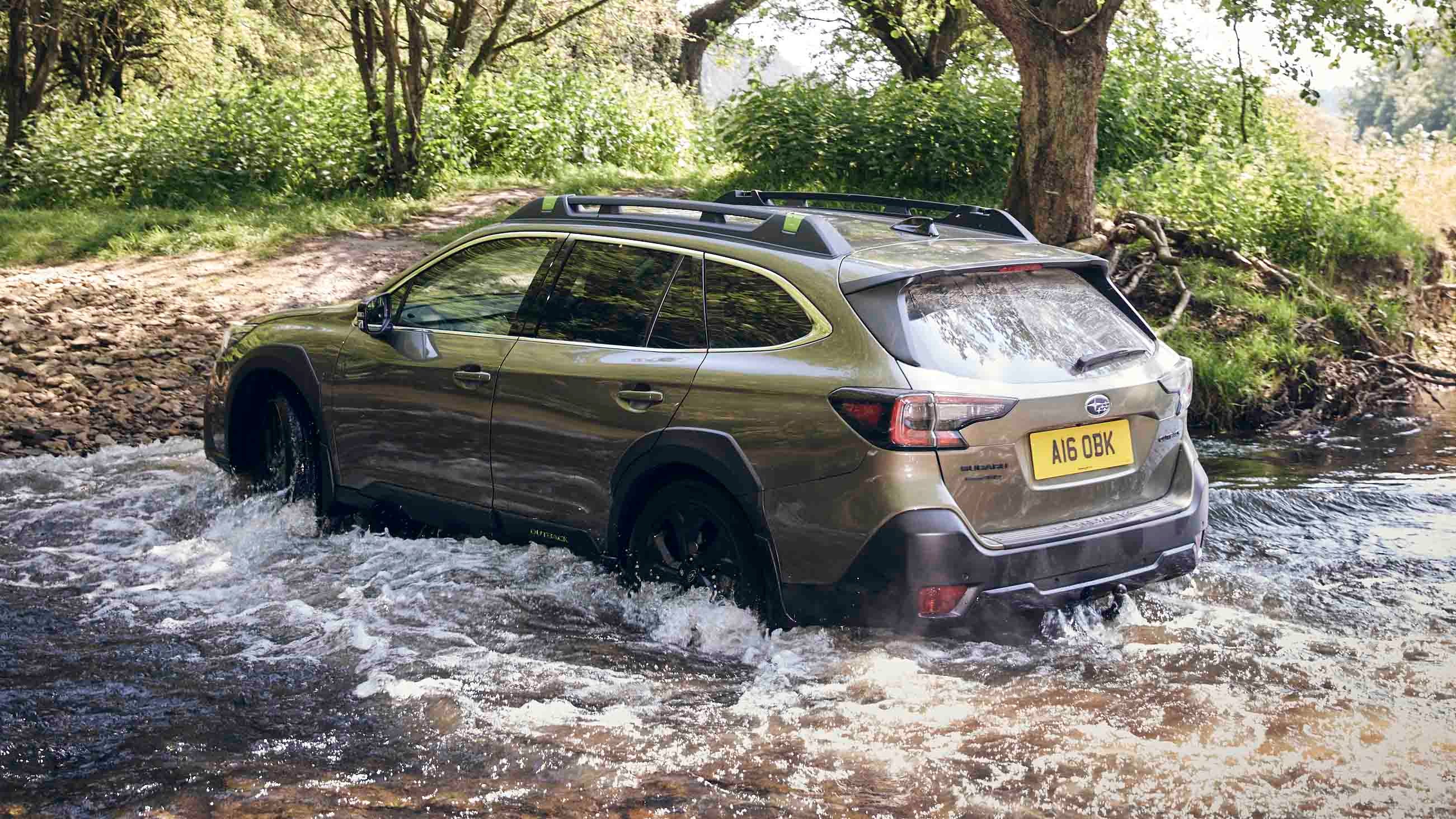
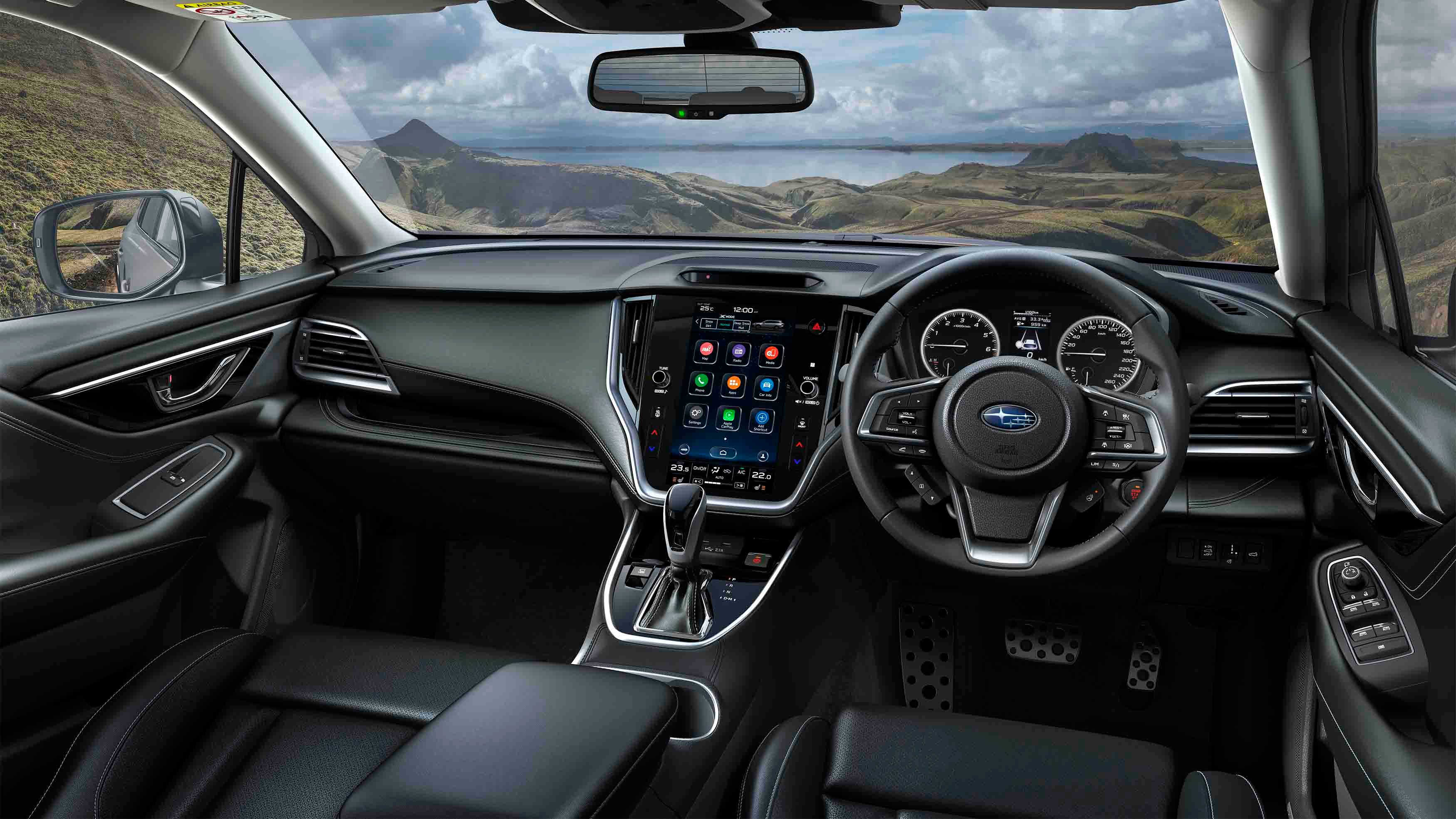
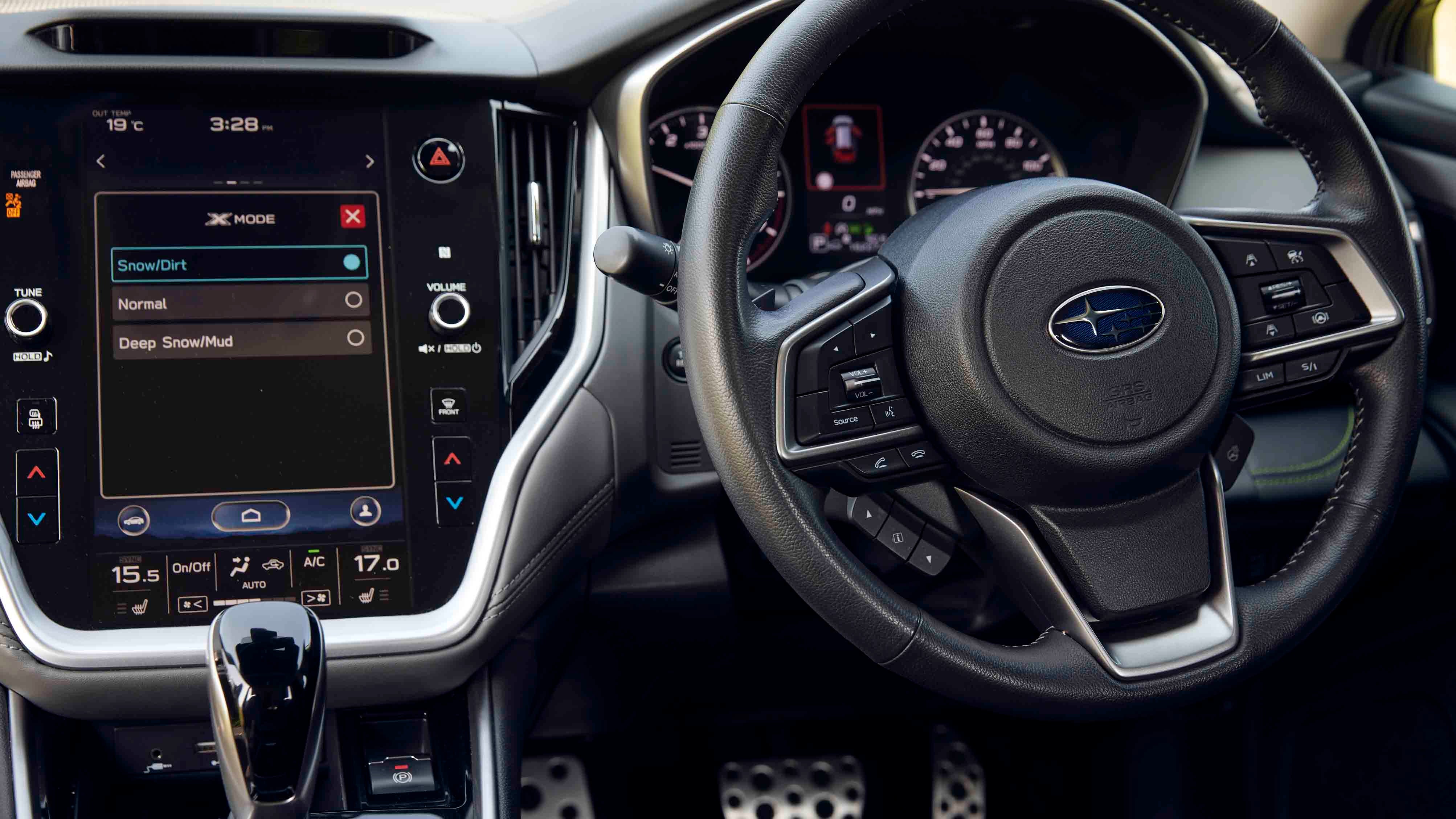
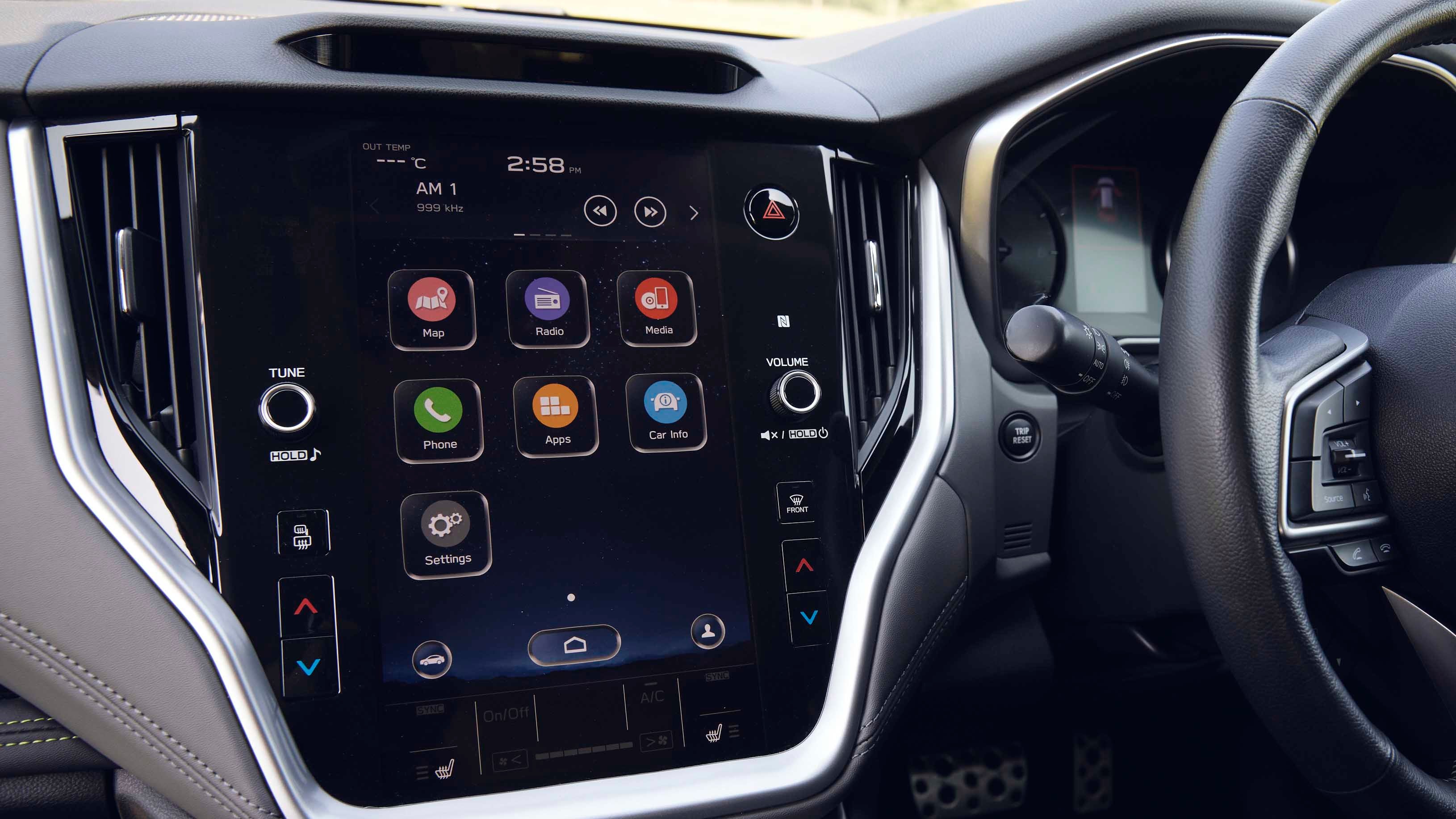
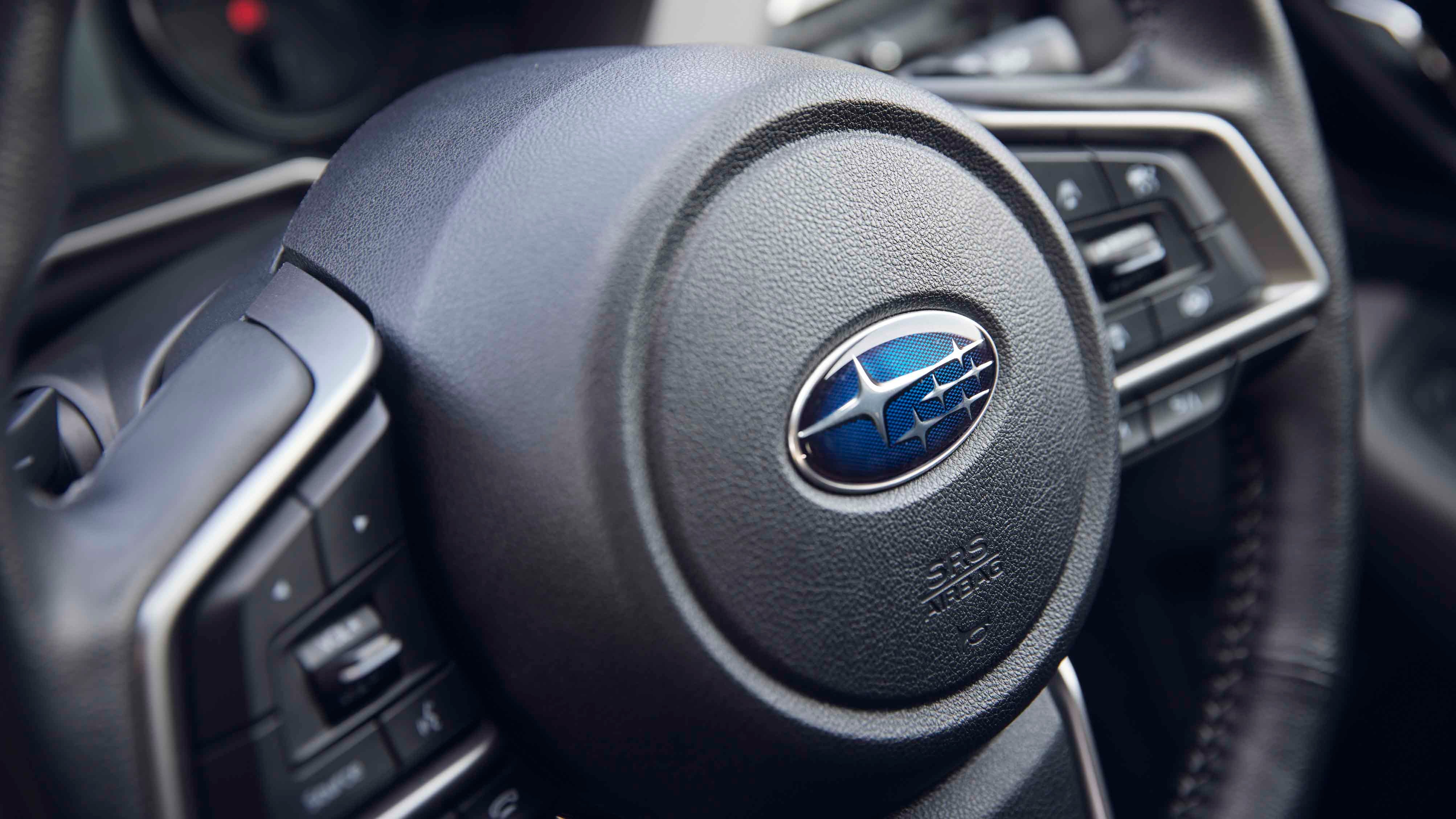
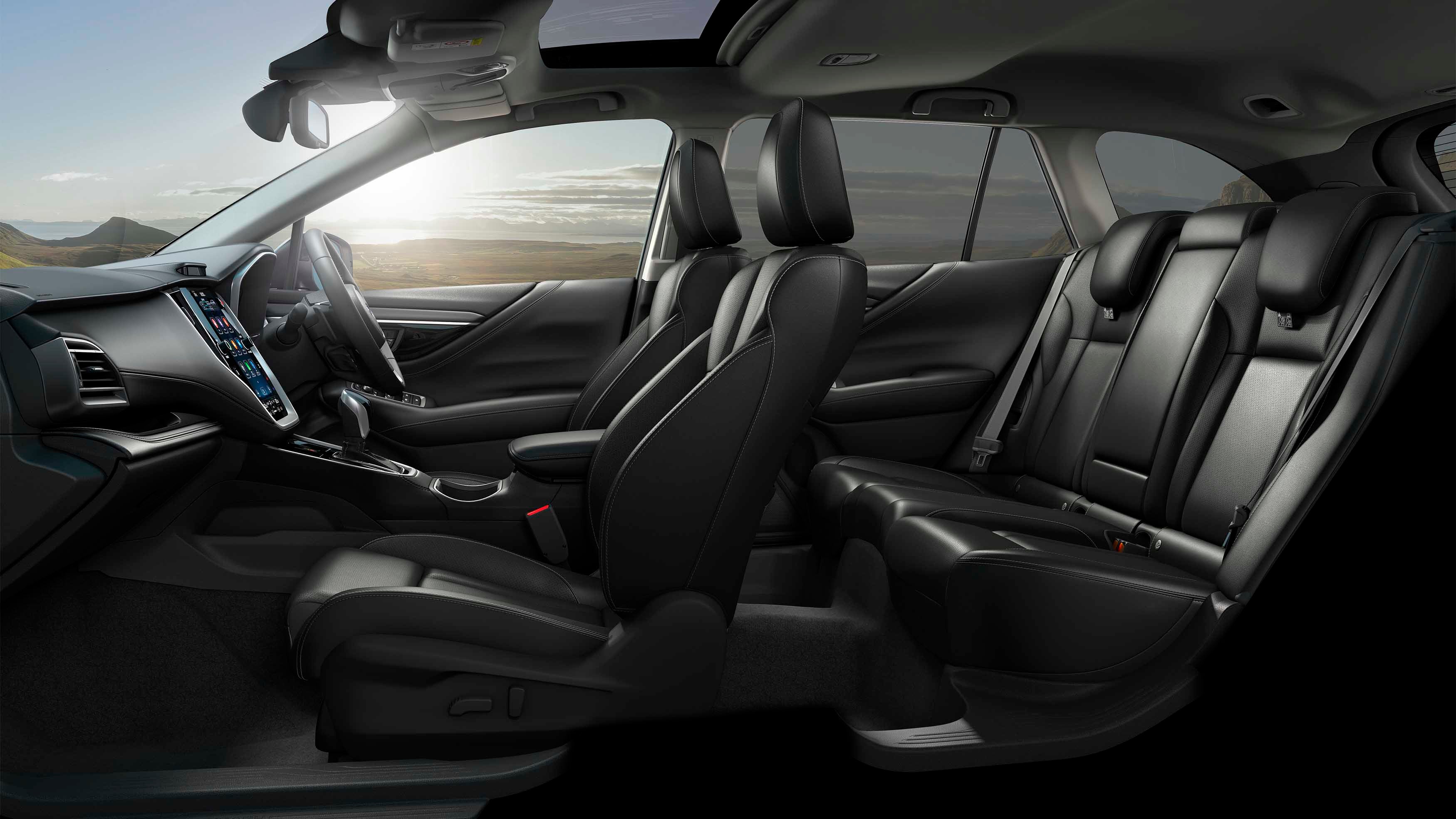
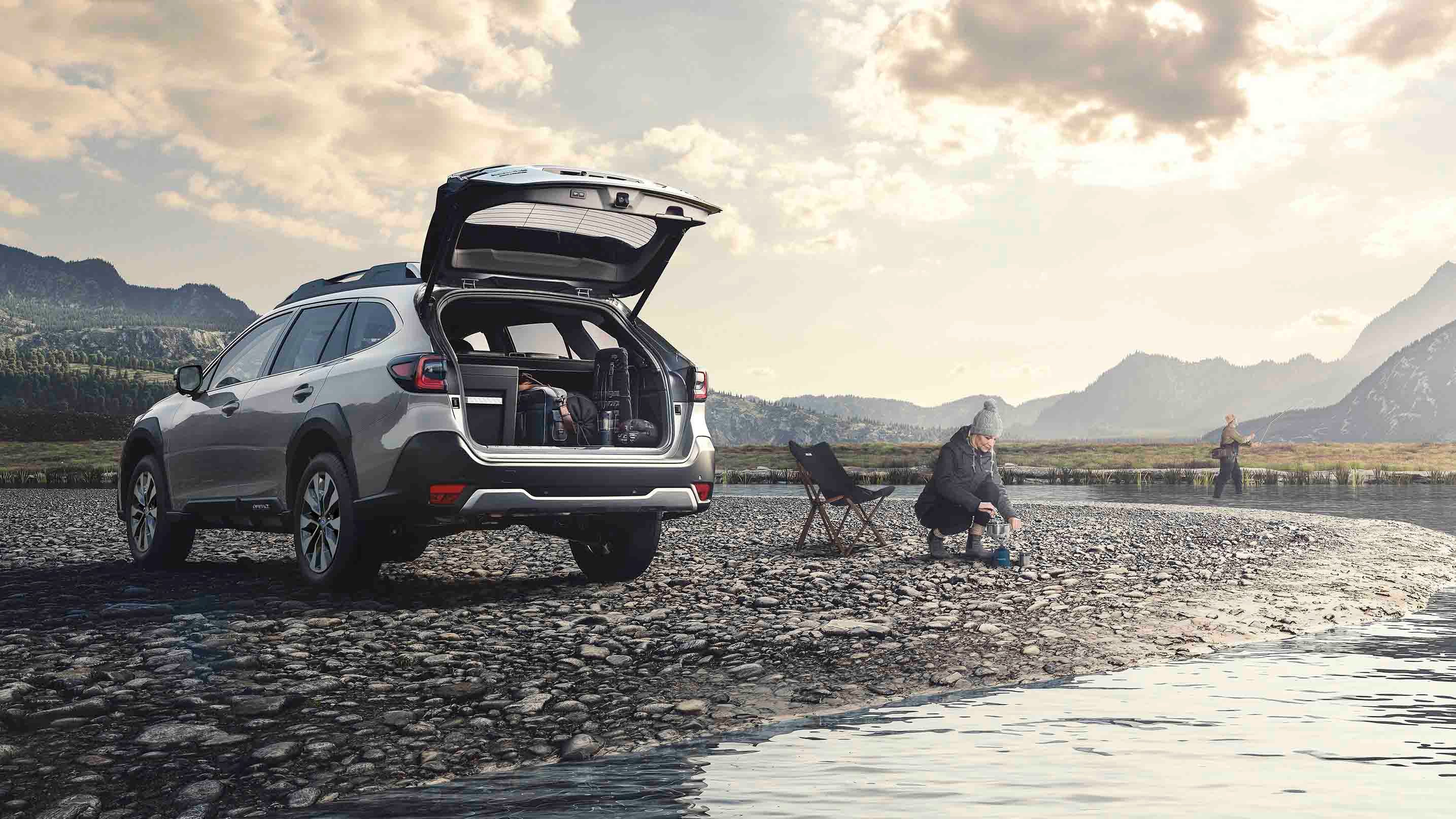
Subaru Outback Review

The Subaru Outback is a left-field choice, but one that’s useful both in the field and once you’ve left the field.
It feels like the automotive equivalent of a Swiss Army knife. In tricky situations, you wouldn’t want to be without its versatility and capability.
- Lots of rear legroom
- 4x4 capability
- Very safe
- Not powerful or economical
- Main rivals are more refined
- Dated graphics
Should I buy a Subaru Outback?
Subaru is one of the biggest mysteries in the car world. It’s a minnow in the UK – in 2024, its 2,419 sales were fewer than Chinese newcomer Omoda – but in just the first six months of 2025 in the USA alone, over 600,000 were registered. So American buyers clearly ‘get’ Subaru – what are we missing?
The Subaru Outback certainly looks like it should be popular. It has the chunky body cladding like the best-selling SUVs, and a similar ride height, plus purposeful roof rails that aren’t just for show.
"The Outback will make light work of places you wouldn’t dare take an E-Class or 5 Series"
The whole car isn’t just for show. Unlike a lot of SUVs, the Outback will happily venture off-road. Its X-Mode system has modes for mud/snow, and deep mud/snow, and the four-wheel-drive system is always on. So even if you’ll never actually head out into the great outdoors, it’s nice to know you can.

Similarly, the towing capacity is two tonnes, letting you pull a caravan or horsebox with relative ease. The Outback’s versatility is impressive.
And its rugged, commanding feel is matched by an exemplary safety score. Euro NCAP gave it five stars in 2021, with scores of 88% and 89% for adult occupant protection and child occupant protection respectively. The 95% score for driver assistance tech has only been beaten once in the five years since.
What’s more, it’s surprisingly posh inside, and everything feels properly screwed together. Durable, hardy. A good thing when your nearest Subaru dealership might be several towns away. Further back, rear legroom is superb and the boot is big and very useful.

So it’s a perfect 10/10 family car? Well, not quite – there are a few things to be aware of. First up, it’s thirsty, and the range estimate in our test car was dramatically inaccurate. You’ll have to work the engine quite hard at times, because the power it has is at the top end of the rev range, and let’s just say the engine isn’t the most refined lump we’ve come across.
It’s comfortable over big bumps but it’s not great to drive, rolling and lurching through corners like a drunk St Bernard dog.
Subarus aren’t cheap, and the Outback’s pricing puts it against the likes of the BMW 5 Series Touring, Audi A6 Avant, Mercedes E-Class Estate and the Volvo V60 and V90. These brands are more recognisable to UK buyers, and more obviously ‘posh’ – while generally being cheaper to run and better to drive.
But if you need the off-road capability – even if it’s just the peace of mind – the Subaru outguns all those cars. The Volvo V60 and V90 Cross Country models are the closest in terms of vibe and ability, although we’d worry about the pretty Swedish bodywork getting munched if we went properly off-road.
Interior and technology

First impressions are that Subaru has managed to create a cabin that feels fit for the 21st century. That’s down to a massive 11.6-inch portrait touchscreen, and a clean, modern look that comes from getting rid of a lot of buttons.
So the old adage of being able to drive in thick gloves doesn’t really ring true in the Outback – but, then, do you actually ever drive in gloves? Most people don’t, and a heated steering wheel is standard on two of the three trim levels.
With so much leather throughout the cabin in our top-spec Touring test car, the Outback feels posher than a BMW 5 Series in some areas. The Nappa leather seats are soft and plump, and feel luxurious. The build quality is up to scratch too, with the overriding feeling being that the Outback will stand the test of time.

Standard equipment is generous, which offsets the car’s high price somewhat. Among the features on the entry-level Limited trim level are auto LED headlights that swivel when you turn the wheel, 18-inch alloys, heated front and rear seats, keyless entry, a reversing camera and two-zone climate control. Mid-spec Field adds a black styling pack, water-repellent synthetic leather seats, aluminium pedals and a powered bootlid, while Touring swaps the black for silver and adds a sunroof, real leather and an 11-speaker Harman Kardon sound system.
The sat nav includes What3Words compatibility, which’ll be handy when you’re out in the wilderness, and we’re extremely glad that wireless Apple CarPlay and Android Auto are standard. Why? Because Subaru’s screens use graphics and fonts that look really outdated.
With the tech, it’s a case of close but no cigar. As well as the dated screen info, the reversing camera is grainy and the lack of a digital instrument cluster feels like an omission. Although, if it had the same fonts as the rest of the tech, that’s probably for the best.
Practicality

The Outback is a big car at nearly 4.9 metres long but, even so, the space on board is really strong. There’s a vast amount of rear legroom – far more than a similarly sized BMW 5 Series – and plenty of headroom for the majority of adults.
The rear seats recline slightly, giving you the option of a more comfortable position on long journeys. As we mentioned, they’re heated as standard, too. Rear-seat passengers get air vents, USBs, cupholders and two map pockets each (how generous!) – including a sewn bit for a phone.
Besides a large transmission tunnel eating up foot room, it shouldn’t be an issue to seat three adults across the rear bench. The high seating position and large glasshouse mean kids should get a great view out, too – although the flap covering the Isofix points is likely to be a pain in the backside when you’re putting a child seat in.

Further back, the 561-litre boot is on a par with the BMW 5 Series Touring, even if it’s a little short of the largest-capacity estates like the Mercedes E-Class and Skoda Superb Estate. We dare say the Outback offers more utility than its rivals though, with plenty of hooks and tiedowns, a 12V socket, seat folding levers and a large underfloor space that’d be perfect for muddy boots or dog gear – or for stashing valuables out of sight.
Storage space up front is decent too, with a useful glovebox, places to put your phone and doorbins that can hold bottles and notebooks. A highlight is the pair of massive cupholders, which are perfect for the big gulp, 15-sugar coffees that Americans seem to consume on a daily basis.
Finally, those roof rails don’t only look great – they’re really useful. They feature a set of built-in crossbars, which swivel round to create a roof rack. We’d like them even better if they could carry more, though – the 68kg roof weight is a bit light for a roof tent or lots of adventure gear.
Engines and performance
If you like the sound of Outback life so far, we’d advise you to skip over these two sections to the used car listings at the bottom.

Still here? The only engine choice is a 2.5-litre non-turbo petrol, linked to Subaru’s Lineartronic CVT automatic gearbox. With the symmetrical all-wheel-drive system always on (some AWD cars are two-wheel drive at times to boost efficiency), the Outback is thirsty. Subaru says you’ll manage 33mpg in mixed driving – a realistic estimate according to the trip computer in our test car.
But watching the range estimate drop from 350 miles to 200 miles in half an hour’s driving – without the fuel gauge budging much – gave us the sort of range anxiety you’d expect from a small-battery electric car. Our advice? Forget the range estimate exists – achieving 33mpg would give you a tank range of 457 miles from the 63-litre fuel tank, which isn’t too bad for a big petrol car.
Performance is hardly earth-shattering, either. Without a turbo or any electrification, the 2.5-litre boxer engine produces 169hp, and 0-62mph takes around 10 seconds. That’s fine, especially if you drive in a relaxed manner, but most rivals are quicker.
Because the Subaru Outback starts from over £40,000 as a new car, it’s subject to the luxury car tax until it’s six years old.
However, you should make some of that money back with the car’s reliability. Subaru is known for its toughness and durability, and you’re highly unlikely to need to visit a dealer unless it’s for routine servicing.
Driving and comfort

Good news first: the Outback is comfortable and composed over big potholes and impacts that might make you wince. The high ride height means you’re isolated from the terrible road surfaces we have in the UK, and the modestly sized wheels have plenty of tyre sidewall to squidge out the harshness.
The driving position is SUV-like, giving you a great view of your surroundings and the road ahead.
And you even get responsive steering, unlike some larger 4x4s that feel lazy and wayward on a paved road.
Unfortunately, the tall ride height and comfort-focused setup makes the Outback display body roll at the slightest provocation. Quick direction changes will throw you towards the other side of the car, highlighting that this is a car that’s best when at a steady pace. It’s not a rally-bred Impreza WRX, after all.
You’ll get a much more refined experience in a Merc E-Class or Volvo V90. Vibrations from the drivetrain are felt in the cabin, and the engine can be noisy. Not only loud, but very droney. It’s not a pleasant noise – we’ve heard nicer sounding diesel engines. There’s also a noticeable amount of wind noise and tyre noise.
With more driver assistance features than we can list here, you get the feeling that the Outback is on your side. Most of these features aren’t too intrusive and can be turned off with just a couple of presses of the touchscreen.
We had to stick to Tarmac roads in our time with the Outback, so we didn’t get to test its mud and snow modes. But the inclusion of these, plus hill-descent control and a 213mm ground clearance, means the Outback will make light work of places you wouldn’t dare take an E-Class or 5 Series. And that’s the appeal of the Outback.















































